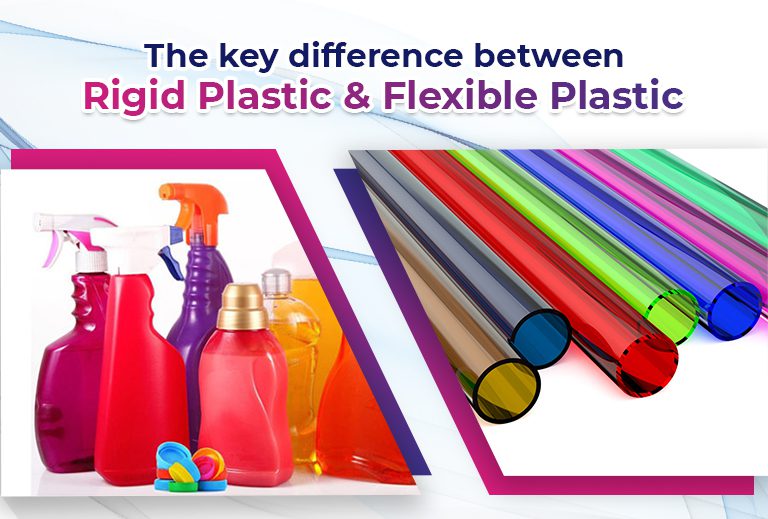Understanding The Difference Between Flexible And Rigid Packaging
When it comes to selecting the right packaging for products, manufacturers have a lot of options to choose from. In fact, there are so many and this makes it difficult to find the ideal packaging to house products. Among the most preferred packaging categories are rigid packaging and flexible packaging.
This article aims to highlight the differences between these two so that you can make an informed decision while choosing packaging for your business.
Before we proceed, here are their definitions:
- Flexible Packaging: It involves all forms of malleable packaging and is used to market a wide range of products globally. Some examples include shrink films, flexible pouches, stretch films, seal bands, clamshells and skin packs.
- Rigid Packaging: It is made of stronger and heavier materials than those used in flexible packaging. This form of packaging tends to be more expensive than flexible packaging.
Let’s now look at the key differences between the two:
- Flexibility in changing shape: Flexible packaging can be easily shaped and changed. However, the same cannot be said about rigid packaging. Examples of rigid packaging include glass containers and cans.
- Difference in weight: Flexible packaging is lightweight because it is made of soft plastic, and this allows products to be transported easily. Rigid packaging is made from thicker and denser materials such as hard plastic, making it heavier than flexible packaging.
- Level of protection: Rigid packaging is known to offer superior protection when compared to flexible packaging. Products with rigid packaging can withstand heat and other external factors better.
- Level of product durability: Products that have flexible packaging are considered to be more durable with a longer shelf life.
- Reaction during mishandling: As mentioned above, flexible packaging can easily be changed. It can bounce back to its normal shape during an accidental fall. Rigid packaging, on the other hand, is known to break or have dents after a fall.
- Ease of customization: Flexible packaging can be customized to match the shape and finish desired by customers. Rigid packaging is not very customizable. Also, the customization process costs a lot more.
- Level of environment-friendliness: Flexible packaging is known to be environment-friendly because it can be manufactured with less materials and resources. The ease with which it can be transported also helps save the carbon footprint. However, rigid packaging is more recycle-friendly since it is made up of easy-to-recycle hard plastic and glass.
- Ease of printing: Flexible printing is great to print on with text and graphics. This makes it easier to boost the visual appeal of products.
- Compatibility with food: Flexible packaging is not ideal to pack food because it can affect flavours. Rigid packaging does not affect flavours because it is not made of soft plastic.
To learn more about rigid and flexible packaging or manufacturers who produce them, we recommend that you visit PLASTIVISION 2023. The prestigious event will be held from December 7 to 11, 2023 at Bombay Exhibition Center, Goregaon, Mumbai.
This is a great opportunity to delve deeper into the world of plastic packaging, allowing you to make connections and get fabulous deals on plastic products. Call 022 6777 8846/48 / +91 99303 55494 or send an email to sanjeevani@plastivision.org to learn more about the event.
Leave a Reply Cancel reply
Recent Posts
- Understanding The Materials That Are Used To Build Plastic Toys
- All You Need To Know About Food-grade Plastics
- A Glance At The Materials That Boost The Performance Of Plastics
- Understanding The Importance Of Exploring New Business Opportunities In The Plastic Industry
- Understanding The Importance Of Investing in R&D For The Plastic Industry
Categories
- 3D Printing
- AIPMA
- Automation
- Automobile Sector
- Bio Plastics
- Environment
- Innovations In Recycling
- Latest Innovations
- Molds & Dies
- News
- Packaging Industry
- Plastic
- Plastic Application
- Plastic Industry
- Plastic Market
- Plastic Myths
- Plastic News From The World
- Plastic Packaging
- Plastic Products
- Plastic Recycling
- Plastic Solar Cells
- Plastic Toys
- Plastic Waste
- Plastic World
- Plastics
- Plastics And Their Applications
- Plastics In Agriculture
- Plastics In Healthcare
- Plastics In Medical Industry
- Plasticulture
- Processing Machinery
- Recycling Machines
- Robotics
- Uncategorized
- Virtual Reality
Archives
- November 2023 (3)
- October 2023 (2)
- September 2023 (3)
- August 2023 (3)
- July 2023 (3)
- June 2023 (3)
- May 2023 (2)
- April 2023 (2)
- March 2023 (2)
- February 2023 (2)
- January 2023 (2)
- December 2022 (3)
- November 2022 (1)
- October 2022 (1)
- September 2022 (2)
- August 2022 (1)
- July 2022 (3)
- May 2022 (3)
- March 2022 (2)
- February 2022 (1)
- January 2022 (1)
- September 2021 (2)
- August 2021 (3)
- July 2021 (4)
- June 2021 (4)
- May 2021 (3)
- April 2021 (2)
- March 2021 (4)
- November 2019 (8)
- October 2019 (8)
- September 2019 (8)
- August 2019 (8)
- July 2019 (8)
- June 2019 (8)
- May 2019 (8)
- April 2019 (8)
- March 2019 (8)
- February 2019 (11)
- January 2019 (8)
- December 2018 (8)
- November 2018 (12)
- October 2018 (12)

